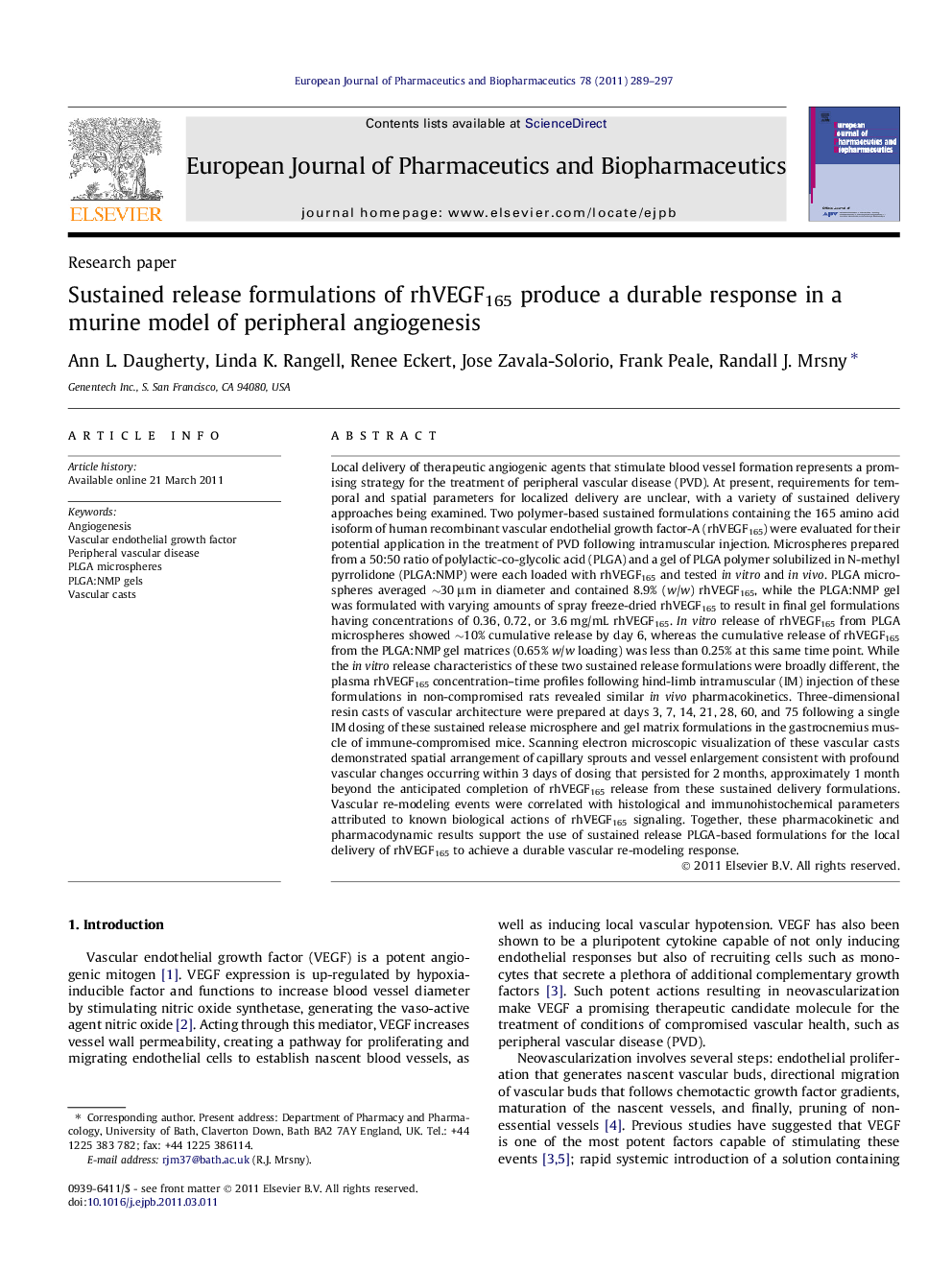| Article ID | Journal | Published Year | Pages | File Type |
|---|---|---|---|---|
| 2084084 | European Journal of Pharmaceutics and Biopharmaceutics | 2011 | 9 Pages |
Local delivery of therapeutic angiogenic agents that stimulate blood vessel formation represents a promising strategy for the treatment of peripheral vascular disease (PVD). At present, requirements for temporal and spatial parameters for localized delivery are unclear, with a variety of sustained delivery approaches being examined. Two polymer-based sustained formulations containing the 165 amino acid isoform of human recombinant vascular endothelial growth factor-A (rhVEGF165) were evaluated for their potential application in the treatment of PVD following intramuscular injection. Microspheres prepared from a 50:50 ratio of polylactic-co-glycolic acid (PLGA) and a gel of PLGA polymer solubilized in N-methyl pyrrolidone (PLGA:NMP) were each loaded with rhVEGF165 and tested in vitro and in vivo. PLGA microspheres averaged ∼30 μm in diameter and contained 8.9% (w/w) rhVEGF165, while the PLGA:NMP gel was formulated with varying amounts of spray freeze-dried rhVEGF165 to result in final gel formulations having concentrations of 0.36, 0.72, or 3.6 mg/mL rhVEGF165. In vitro release of rhVEGF165 from PLGA microspheres showed ∼10% cumulative release by day 6, whereas the cumulative release of rhVEGF165 from the PLGA:NMP gel matrices (0.65% w/w loading) was less than 0.25% at this same time point. While the in vitro release characteristics of these two sustained release formulations were broadly different, the plasma rhVEGF165 concentration–time profiles following hind-limb intramuscular (IM) injection of these formulations in non-compromised rats revealed similar in vivo pharmacokinetics. Three-dimensional resin casts of vascular architecture were prepared at days 3, 7, 14, 21, 28, 60, and 75 following a single IM dosing of these sustained release microsphere and gel matrix formulations in the gastrocnemius muscle of immune-compromised mice. Scanning electron microscopic visualization of these vascular casts demonstrated spatial arrangement of capillary sprouts and vessel enlargement consistent with profound vascular changes occurring within 3 days of dosing that persisted for 2 months, approximately 1 month beyond the anticipated completion of rhVEGF165 release from these sustained delivery formulations. Vascular re-modeling events were correlated with histological and immunohistochemical parameters attributed to known biological actions of rhVEGF165 signaling. Together, these pharmacokinetic and pharmacodynamic results support the use of sustained release PLGA-based formulations for the local delivery of rhVEGF165 to achieve a durable vascular re-modeling response.
Graphical abstractPLGA polymer microspheres and a gel of PLGA solubilized in N-methyl pyrrolidone formulations of VEGF were tested in vitro and in vivo following hind-limb intramuscular (IM) injection. Three-dimensional resin castings of vascular architecture visualized by scanning electron microscopy along with histological and immunohistochemical parameters demonstrated profound vascular changes within three days of dosing that persisted for two months.Figure optionsDownload full-size imageDownload as PowerPoint slide
